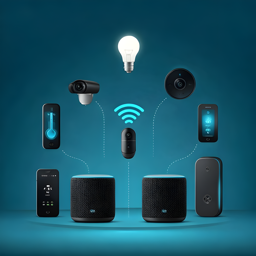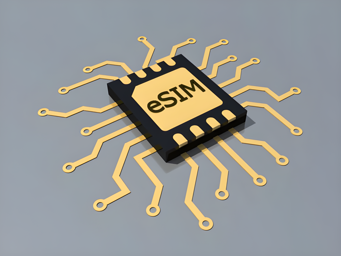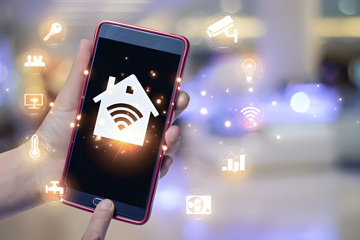Choosing the Best Wireless Tech for ESP32 Projects
ESP32 IoT: Comparing Wireless Protocols for Optimal Projects
The ESP32’s Combining Wi-Fi with Deep Sleep for Low-Power ApplicationsLearn how to integrate Wi-Fi and deep sleep on ESP32 to maximize battery life in IoT devices. This guide offers practical tips and step-by-step instructions. versatility in supporting multiple wireless protocols makes it a powerhouse for IoT development. However, choosing the right protocol requires balancing range
Combining Wi-Fi with Deep Sleep for Low-Power ApplicationsLearn how to integrate Wi-Fi and deep sleep on ESP32 to maximize battery life in IoT devices. This guide offers practical tips and step-by-step instructions. versatility in supporting multiple wireless protocols makes it a powerhouse for IoT development. However, choosing the right protocol requires balancing range Quick Comparison: Range, power consumption, costs, and complexity of each technologyDiscover the ideal wireless solution for your ESP32 IoT project by analyzing range, power, cost, and complexity. Optimize connectivity now., power consumption
Quick Comparison: Range, power consumption, costs, and complexity of each technologyDiscover the ideal wireless solution for your ESP32 IoT project by analyzing range, power, cost, and complexity. Optimize connectivity now., power consumption Quick Comparison: Range, power consumption, costs, and complexity of each technologyDiscover the ideal wireless solution for your ESP32 IoT project by analyzing range, power, cost, and complexity. Optimize connectivity now., data rate, cost
Quick Comparison: Range, power consumption, costs, and complexity of each technologyDiscover the ideal wireless solution for your ESP32 IoT project by analyzing range, power, cost, and complexity. Optimize connectivity now., data rate, cost Quick Comparison: Range, power consumption, costs, and complexity of each technologyDiscover the ideal wireless solution for your ESP32 IoT project by analyzing range, power, cost, and complexity. Optimize connectivity now., and security-each critical to a project’s success. This guide merges practical insights, decision matrices, and real-world examples to help you navigate these trade-offs and select the optimal connectivity solution.
Quick Comparison: Range, power consumption, costs, and complexity of each technologyDiscover the ideal wireless solution for your ESP32 IoT project by analyzing range, power, cost, and complexity. Optimize connectivity now., and security-each critical to a project’s success. This guide merges practical insights, decision matrices, and real-world examples to help you navigate these trade-offs and select the optimal connectivity solution.
Table of Contents🔗
- Key Decision Factors
- Protocol Comparison Matrix
- Building a Custom Decision Matrix
 Cost Analysis: Total Ownership for ESP32 Connectivity SolutionsUnlock cost savings with ESP32 IoT solutions. This guide reveals how to balance hardware, connectivity, power, and maintenance costs to master TCO.
Cost Analysis: Total Ownership for ESP32 Connectivity SolutionsUnlock cost savings with ESP32 IoT solutions. This guide reveals how to balance hardware, connectivity, power, and maintenance costs to master TCO. - Hybrid Solutions
 Zigbee Green Power: Ultra-Low-Power Energy Harvesting SolutionsDiscover how ZGP enables battery-free IoT devices through energy harvesting with ESP32 integrations, supporting smart home and industrial applications.
Zigbee Green Power: Ultra-Low-Power Energy Harvesting SolutionsDiscover how ZGP enables battery-free IoT devices through energy harvesting with ESP32 integrations, supporting smart home and industrial applications. - Case Studies
 Zigbee Green Power: Ultra-Low-Power Energy Harvesting SolutionsDiscover how ZGP enables battery-free IoT devices through energy harvesting with ESP32 integrations, supporting smart home and industrial applications.
Zigbee Green Power: Ultra-Low-Power Energy Harvesting SolutionsDiscover how ZGP enables battery-free IoT devices through energy harvesting with ESP32 integrations, supporting smart home and industrial applications. - Conclusion
Key Decision Factors🔗
Range
- Short Range
 Quick Comparison: Range, power consumption, costs, and complexity of each technologyDiscover the ideal wireless solution for your ESP32 IoT project by analyzing range, power, cost, and complexity. Optimize connectivity now. (0–10m): BLE
Quick Comparison: Range, power consumption, costs, and complexity of each technologyDiscover the ideal wireless solution for your ESP32 IoT project by analyzing range, power, cost, and complexity. Optimize connectivity now. (0–10m): BLE Native Protocols: Wi-Fi (2.4 GHz), Bluetooth Classic, and BLEExplore ESP32 connectivity with Wi-Fi, Bluetooth Classic, and BLE. Learn implementation tips and best practices for IoT projects., NFC.
Native Protocols: Wi-Fi (2.4 GHz), Bluetooth Classic, and BLEExplore ESP32 connectivity with Wi-Fi, Bluetooth Classic, and BLE. Learn implementation tips and best practices for IoT projects., NFC. - Medium Range
 Quick Comparison: Range, power consumption, costs, and complexity of each technologyDiscover the ideal wireless solution for your ESP32 IoT project by analyzing range, power, cost, and complexity. Optimize connectivity now. (10m–1km): Wi-Fi, Zigbee, Thread, 6LoWPAN
Quick Comparison: Range, power consumption, costs, and complexity of each technologyDiscover the ideal wireless solution for your ESP32 IoT project by analyzing range, power, cost, and complexity. Optimize connectivity now. (10m–1km): Wi-Fi, Zigbee, Thread, 6LoWPAN 6LoWPAN Compression: Optimizing IPv6 for ESP32’s Constrained NetworksDiscover how 6LoWPAN smart compression optimizes IPv6 for ESP32 devices in IoT deployments, slashing packet overhead while boosting network efficiency..
6LoWPAN Compression: Optimizing IPv6 for ESP32’s Constrained NetworksDiscover how 6LoWPAN smart compression optimizes IPv6 for ESP32 devices in IoT deployments, slashing packet overhead while boosting network efficiency.. - Long Range
 LoRa Sensor Nodes: Sending Data to The Things Network (TTN)Discover how to deploy ESP32 with LoRa and TTN for long-range IoT sensor networks. Our comprehensive guide covers hardware, configuration, and troubleshooting. (>1km): LoRa, Sigfox, NB-IoT, LTE Cat-M1
LoRa Sensor Nodes: Sending Data to The Things Network (TTN)Discover how to deploy ESP32 with LoRa and TTN for long-range IoT sensor networks. Our comprehensive guide covers hardware, configuration, and troubleshooting. (>1km): LoRa, Sigfox, NB-IoT, LTE Cat-M1 Real-Time Data Streaming over LTE: Video and Telemetry with ESP32Discover a comprehensive guide to real-time LTE streaming with ESP32 and SIM7000G for video and telemetry in robust IoT applications..
Real-Time Data Streaming over LTE: Video and Telemetry with ESP32Discover a comprehensive guide to real-time LTE streaming with ESP32 and SIM7000G for video and telemetry in robust IoT applications.. - Example: Agricultural sensors use LoRa for kilometer-scale coverage, while smart homes deploy Zigbee
 Interfacing ESP32 with Zigbee3.0 Devices (Xiaomi, Philips Hue)Unlock seamless smart home integration by following our detailed guide on bridging ESP32 with external Zigbee modules for reliable IoT solutions. for room-level mesh networks.
Interfacing ESP32 with Zigbee3.0 Devices (Xiaomi, Philips Hue)Unlock seamless smart home integration by following our detailed guide on bridging ESP32 with external Zigbee modules for reliable IoT solutions. for room-level mesh networks.
Power Consumption
- Battery-Powered: BLE (µA sleep), LoRaWAN
 ESP32 Multi-Protocol Gateways: Combining Wi-Fi, BLE, and LoRaDiscover how to build a multi-protocol ESP32 gateway integrating Wi-Fi, BLE, and LoRa for scalable IoT deployments in smart cities and industry. (long sleep intervals), Sigfox (ultra-low duty cycle).
ESP32 Multi-Protocol Gateways: Combining Wi-Fi, BLE, and LoRaDiscover how to build a multi-protocol ESP32 gateway integrating Wi-Fi, BLE, and LoRa for scalable IoT deployments in smart cities and industry. (long sleep intervals), Sigfox (ultra-low duty cycle). - Mains-Powered: Wi-Fi, Zigbee, LTE Cat-M1
 Real-Time Data Streaming over LTE: Video and Telemetry with ESP32Discover a comprehensive guide to real-time LTE streaming with ESP32 and SIM7000G for video and telemetry in robust IoT applications..
Real-Time Data Streaming over LTE: Video and Telemetry with ESP32Discover a comprehensive guide to real-time LTE streaming with ESP32 and SIM7000G for video and telemetry in robust IoT applications..
// LoRa sleep mode configuration
void enterSleepMode() {
LoRa.sleep();
esp_sleep_enable_timer_wakeup(3600 * 1000000); // Wake hourly
esp_deep_sleep_start();
}
Data Rate
- Low (<100 kbps): LoRa, Sigfox
 Sigfox Message Encoding: Packing Sensor Data into 12-byte PayloadsLearn efficient data encoding techniques for Sigfox's constrained 12-byte payloads. Discover bitwise operations, structured encoding & CBOR strategies., NFC.
Sigfox Message Encoding: Packing Sensor Data into 12-byte PayloadsLearn efficient data encoding techniques for Sigfox's constrained 12-byte payloads. Discover bitwise operations, structured encoding & CBOR strategies., NFC. - Medium (1–50 Mbps): BLE, Zigbee
 Interfacing ESP32 with Zigbee3.0 Devices (Xiaomi, Philips Hue)Unlock seamless smart home integration by following our detailed guide on bridging ESP32 with external Zigbee modules for reliable IoT solutions., LTE-M.
Interfacing ESP32 with Zigbee3.0 Devices (Xiaomi, Philips Hue)Unlock seamless smart home integration by following our detailed guide on bridging ESP32 with external Zigbee modules for reliable IoT solutions., LTE-M. - High (>50 Mbps): Wi-Fi
 Arquitetura ESP32: SoC dual-core, subsistemas RF integradosDiscover the ESP32’s dual-core prowess and integrated RF subsystems for efficient, innovative IoT applications—from smart homes to industrial sensors., LTE Cat-1.
Arquitetura ESP32: SoC dual-core, subsistemas RF integradosDiscover the ESP32’s dual-core prowess and integrated RF subsystems for efficient, innovative IoT applications—from smart homes to industrial sensors., LTE Cat-1. - Trade-off: High-throughput protocols like Wi-Fi
 Arquitetura ESP32: SoC dual-core, subsistemas RF integradosDiscover the ESP32’s dual-core prowess and integrated RF subsystems for efficient, innovative IoT applications—from smart homes to industrial sensors. drain batteries faster.
Arquitetura ESP32: SoC dual-core, subsistemas RF integradosDiscover the ESP32’s dual-core prowess and integrated RF subsystems for efficient, innovative IoT applications—from smart homes to industrial sensors. drain batteries faster.
Cost
- Hardware: NFC/BLE ($1–$5), LoRa/Zigbee
 Interfacing ESP32 with Zigbee3.0 Devices (Xiaomi, Philips Hue)Unlock seamless smart home integration by following our detailed guide on bridging ESP32 with external Zigbee modules for reliable IoT solutions. ($10–$20), LTE modules ($20+).
Interfacing ESP32 with Zigbee3.0 Devices (Xiaomi, Philips Hue)Unlock seamless smart home integration by following our detailed guide on bridging ESP32 with external Zigbee modules for reliable IoT solutions. ($10–$20), LTE modules ($20+). - Operational: LoRa/Sigfox
 Sigfox Message Encoding: Packing Sensor Data into 12-byte PayloadsLearn efficient data encoding techniques for Sigfox's constrained 12-byte payloads. Discover bitwise operations, structured encoding & CBOR strategies. (subscription fees), Wi-Fi/BLE (free).
Sigfox Message Encoding: Packing Sensor Data into 12-byte PayloadsLearn efficient data encoding techniques for Sigfox's constrained 12-byte payloads. Discover bitwise operations, structured encoding & CBOR strategies. (subscription fees), Wi-Fi/BLE (free).
Security
- Built-in Encryption
 Connecting ESP32 to Cloud Services via Wi-FiDiscover how to connect your ESP32 to AWS, Azure, and Google Cloud using secure Wi-Fi. This guide covers setup, error handling, and low power strategies.: Wi-Fi
Connecting ESP32 to Cloud Services via Wi-FiDiscover how to connect your ESP32 to AWS, Azure, and Google Cloud using secure Wi-Fi. This guide covers setup, error handling, and low power strategies.: Wi-Fi Arquitetura ESP32: SoC dual-core, subsistemas RF integradosDiscover the ESP32’s dual-core prowess and integrated RF subsystems for efficient, innovative IoT applications—from smart homes to industrial sensors. (WPA3), BLE (LE Secure), LTE (SIM-based).
Arquitetura ESP32: SoC dual-core, subsistemas RF integradosDiscover the ESP32’s dual-core prowess and integrated RF subsystems for efficient, innovative IoT applications—from smart homes to industrial sensors. (WPA3), BLE (LE Secure), LTE (SIM-based). - Custom Implementation Needed: LoRa (AES-128), Zigbee (APS encryption
 Connecting ESP32 to Cloud Services via Wi-FiDiscover how to connect your ESP32 to AWS, Azure, and Google Cloud using secure Wi-Fi. This guide covers setup, error handling, and low power strategies.).
Connecting ESP32 to Cloud Services via Wi-FiDiscover how to connect your ESP32 to AWS, Azure, and Google Cloud using secure Wi-Fi. This guide covers setup, error handling, and low power strategies.).
Complexity
- Beginner-Friendly: Wi-Fi
 Arquitetura ESP32: SoC dual-core, subsistemas RF integradosDiscover the ESP32’s dual-core prowess and integrated RF subsystems for efficient, innovative IoT applications—from smart homes to industrial sensors., BLE, NFC.
Arquitetura ESP32: SoC dual-core, subsistemas RF integradosDiscover the ESP32’s dual-core prowess and integrated RF subsystems for efficient, innovative IoT applications—from smart homes to industrial sensors., BLE, NFC. - Advanced: LoRa, Zigbee, NB-IoT, LTE Cat-M1
 Real-Time Data Streaming over LTE: Video and Telemetry with ESP32Discover a comprehensive guide to real-time LTE streaming with ESP32 and SIM7000G for video and telemetry in robust IoT applications..
Real-Time Data Streaming over LTE: Video and Telemetry with ESP32Discover a comprehensive guide to real-time LTE streaming with ESP32 and SIM7000G for video and telemetry in robust IoT applications..
Protocol Comparison Matrix🔗
| Protocol | Range | Data Rate | Power Use | Cost | Best For |
|---|---|---|---|---|---|
| Wi-Fi | Medium (~100m) | High (Mbps) | High | Low | Video streaming, cloud connectivity |
| BLE | Short (~10m) | Medium (Mbps) | Very Low | Low | Wearables, proximity sensors |
| Zigbee | Medium (~100m) | Low (Kbps) | Low | Medium | Mesh networks (smart homes) |
| LoRa | Long (~10km) | Very Low (bps) | Very Low | Medium | Agriculture, environmental monitoring |
| LTE-M | Long (~10km) | Medium (Mbps) | Medium | High | Asset tracking, remote telemetry |
| NFC | Very Short (~4cm) | Low (Kbps) | Negligible | Low | Secure authentication, payments |
| Sigfox | Long (~50km) | Very Low (bps) | Very Low | Medium | Global LPWAN, asset tracking |
| NB-IoT | Long (~10km) | Low (Kbps) | Very Low | High | Industrial IoT, smart cities |
| 6LoWPAN | Medium (~100m) | Low (Kbps) | Low | Medium | Industrial mesh networks |
Building a Custom Decision Matrix🔗
Step 1: Weight Your Criteria
Assign weights to factors like range Quick Comparison: Range, power consumption, costs, and complexity of each technologyDiscover the ideal wireless solution for your ESP32 IoT project by analyzing range, power, cost, and complexity. Optimize connectivity now. (30%), power (30%), data rate (20%), cost (10%), and security (10%) based on project needs.
Quick Comparison: Range, power consumption, costs, and complexity of each technologyDiscover the ideal wireless solution for your ESP32 IoT project by analyzing range, power, cost, and complexity. Optimize connectivity now. (30%), power (30%), data rate (20%), cost (10%), and security (10%) based on project needs.
Step 2: Score Protocols
Rate each protocol (1–5) against your criteria. Example pseudo-code:
criteria = {"Range": 0.3, "Power": 0.3, "Data Rate": 0.2, "Cost": 0.1, "Security": 0.1}
scores = {
"LoRa": {"Range": 5, "Power": 5, "Data Rate": 2, "Cost": 4, "Security": 3},
"Wi-Fi": {"Range": 3, "Power": 2, "Data Rate": 5, "Cost": 3, "Security": 4},
}
# Calculate total scores
for protocol in scores:
total = sum(scores[protocol][c] * criteria[c] for c in criteria)
print(f"{protocol}: {total}")
Step 3: Validate with Prototyping
Field-test top-scoring protocols to refine your matrix.
Hybrid Solutions🔗
Combine protocols to leverage their strengths:
1. BLE + LoRa ESP32 Multi-Protocol Gateways: Combining Wi-Fi, BLE, and LoRaDiscover how to build a multi-protocol ESP32 gateway integrating Wi-Fi, BLE, and LoRa for scalable IoT deployments in smart cities and industry.: BLE for device setup
ESP32 Multi-Protocol Gateways: Combining Wi-Fi, BLE, and LoRaDiscover how to build a multi-protocol ESP32 gateway integrating Wi-Fi, BLE, and LoRa for scalable IoT deployments in smart cities and industry.: BLE for device setup SIM7000G Module with ESP32: Configuring LTE-M and GNSSMaster ESP32 integration with SIM7000G for reliable LTE-M connectivity and precise GPS tracking, featuring hardware setup, AT commands, and power tips., LoRa for long-range transmission.
SIM7000G Module with ESP32: Configuring LTE-M and GNSSMaster ESP32 integration with SIM7000G for reliable LTE-M connectivity and precise GPS tracking, featuring hardware setup, AT commands, and power tips., LoRa for long-range transmission.
2. Wi-Fi + Zigbee Interfacing ESP32 with Zigbee3.0 Devices (Xiaomi, Philips Hue)Unlock seamless smart home integration by following our detailed guide on bridging ESP32 with external Zigbee modules for reliable IoT solutions.: Wi-Fi for cloud comms, Zigbee
Interfacing ESP32 with Zigbee3.0 Devices (Xiaomi, Philips Hue)Unlock seamless smart home integration by following our detailed guide on bridging ESP32 with external Zigbee modules for reliable IoT solutions.: Wi-Fi for cloud comms, Zigbee Interfacing ESP32 with Zigbee3.0 Devices (Xiaomi, Philips Hue)Unlock seamless smart home integration by following our detailed guide on bridging ESP32 with external Zigbee modules for reliable IoT solutions. for low-power sensors.
Interfacing ESP32 with Zigbee3.0 Devices (Xiaomi, Philips Hue)Unlock seamless smart home integration by following our detailed guide on bridging ESP32 with external Zigbee modules for reliable IoT solutions. for low-power sensors.
// Hybrid Wi-Fi/LoRa switching
void sendData() {
if (WiFi.status() == WL_CONNECTED) {
sendViaWiFi(sensorData);
} else {
sendViaLoRa(sensorData);
}
}
Case Studies🔗
Smart City Lighting
- Protocols: Zigbee
 Interfacing ESP32 with Zigbee3.0 Devices (Xiaomi, Philips Hue)Unlock seamless smart home integration by following our detailed guide on bridging ESP32 with external Zigbee modules for reliable IoT solutions. (mesh control) + LTE (central monitoring).
Interfacing ESP32 with Zigbee3.0 Devices (Xiaomi, Philips Hue)Unlock seamless smart home integration by following our detailed guide on bridging ESP32 with external Zigbee modules for reliable IoT solutions. (mesh control) + LTE (central monitoring). - Outcome: 30% lower power use vs. Wi-Fi
 Arquitetura ESP32: SoC dual-core, subsistemas RF integradosDiscover the ESP32’s dual-core prowess and integrated RF subsystems for efficient, innovative IoT applications—from smart homes to industrial sensors.-only systems.
Arquitetura ESP32: SoC dual-core, subsistemas RF integradosDiscover the ESP32’s dual-core prowess and integrated RF subsystems for efficient, innovative IoT applications—from smart homes to industrial sensors.-only systems.
Agricultural Monitoring
- Protocols: LoRa (soil sensors) + LTE-M
 Delta Updates: Reducing OTA Payload Size for Cellular NetworksLearn how delta updates reduce data usage, improve speed, and cut costs for ESP32 firmware patches over NB-IoT/LTE-M cellular networks. (fallback during rain).
Delta Updates: Reducing OTA Payload Size for Cellular NetworksLearn how delta updates reduce data usage, improve speed, and cut costs for ESP32 firmware patches over NB-IoT/LTE-M cellular networks. (fallback during rain). - Payload
 Sigfox Message Encoding: Packing Sensor Data into 12-byte PayloadsLearn efficient data encoding techniques for Sigfox's constrained 12-byte payloads. Discover bitwise operations, structured encoding & CBOR strategies. Optimization:
Sigfox Message Encoding: Packing Sensor Data into 12-byte PayloadsLearn efficient data encoding techniques for Sigfox's constrained 12-byte payloads. Discover bitwise operations, structured encoding & CBOR strategies. Optimization:
struct SensorData {
uint16_t temp, humidity; // 4 bytes
uint32_t timestamp; // 4 bytes
}; // Total: 8 bytes (fits LoRa’s 12-byte limit)
Industrial IoT
- Protocols: NB-IoT (low power) + LTE Cat-M1
 Real-Time Data Streaming over LTE: Video and Telemetry with ESP32Discover a comprehensive guide to real-time LTE streaming with ESP32 and SIM7000G for video and telemetry in robust IoT applications. (real-time data).
Real-Time Data Streaming over LTE: Video and Telemetry with ESP32Discover a comprehensive guide to real-time LTE streaming with ESP32 and SIM7000G for video and telemetry in robust IoT applications. (real-time data). - Result: Reliable connectivity in harsh environments.
Secure Payment System
- Protocols: NFC (authentication) + BLE
 Native Protocols: Wi-Fi (2.4 GHz), Bluetooth Classic, and BLEExplore ESP32 connectivity with Wi-Fi, Bluetooth Classic, and BLE. Learn implementation tips and best practices for IoT projects. (user interaction).
Native Protocols: Wi-Fi (2.4 GHz), Bluetooth Classic, and BLEExplore ESP32 connectivity with Wi-Fi, Bluetooth Classic, and BLE. Learn implementation tips and best practices for IoT projects. (user interaction). - Why: NFC ensures security, BLE
 Native Protocols: Wi-Fi (2.4 GHz), Bluetooth Classic, and BLEExplore ESP32 connectivity with Wi-Fi, Bluetooth Classic, and BLE. Learn implementation tips and best practices for IoT projects. enables seamless UX.
Native Protocols: Wi-Fi (2.4 GHz), Bluetooth Classic, and BLEExplore ESP32 connectivity with Wi-Fi, Bluetooth Classic, and BLE. Learn implementation tips and best practices for IoT projects. enables seamless UX.
Conclusion🔗
No single protocol fits all ESP32 projects. Use the decision matrix Cost Analysis: Total Ownership for ESP32 Connectivity SolutionsUnlock cost savings with ESP32 IoT solutions. This guide reveals how to balance hardware, connectivity, power, and maintenance costs to master TCO. to:
Cost Analysis: Total Ownership for ESP32 Connectivity SolutionsUnlock cost savings with ESP32 IoT solutions. This guide reveals how to balance hardware, connectivity, power, and maintenance costs to master TCO. to:
1. Prioritize range Quick Comparison: Range, power consumption, costs, and complexity of each technologyDiscover the ideal wireless solution for your ESP32 IoT project by analyzing range, power, cost, and complexity. Optimize connectivity now. and power for outdoor/battery applications.
Quick Comparison: Range, power consumption, costs, and complexity of each technologyDiscover the ideal wireless solution for your ESP32 IoT project by analyzing range, power, cost, and complexity. Optimize connectivity now. and power for outdoor/battery applications.
2. Opt for high data rates for multimedia/real-time systems.
3. Layer security based on data sensitivity.
By aligning your project’s needs with the right protocol-or combination-you’ll achieve optimal performance, efficiency, and scalability. Happy building! 🛠️
Author: Marcelo V. Souza - Engenheiro de Sistemas e Entusiasta em IoT e Desenvolvimento de Software, com foco em inovação tecnológica.
References🔗
- Arduino Forum: forum.arduino.cc
- Arduino IDE Official Website: arduino.cc
- ESP-IDF Programming Guide: docs.espressif.com/projects/esp-idf
- ESP32 Arduino Core Documentation: docs.espressif.com/projects/arduino-esp32
- Espressif Documentation: docs.espressif.com
 9 months ago
9 months ago
 9 months ago
9 months ago
 9 months ago
9 months ago
 10 months ago
10 months ago
 9 months ago
9 months ago
 9 months ago
9 months ago
 9 months ago
9 months ago
 9 months ago
9 months ago
 9 months ago
9 months ago
 9 months ago
9 months ago
 9 months ago
9 months ago
 9 months ago
9 months ago
 9 months ago
9 months ago
 9 months ago
9 months ago
 9 months ago
9 months ago
 9 months ago
9 months ago
 9 months ago
9 months ago
 9 months ago
9 months ago
 9 months ago
9 months ago
 9 months ago
9 months ago
 9 months ago
9 months ago
 9 months ago
9 months ago
 9 months ago
9 months ago
 9 months ago
9 months ago